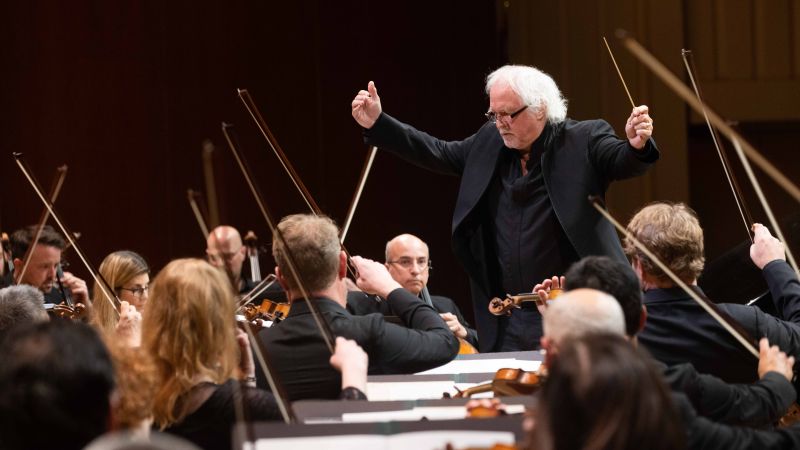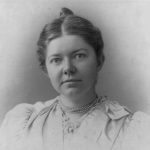March 3 & 5, 2022
Atlanta Symphony Hall, Woodruff Arts Center, Atlanta, GA
Sir Donald Runnicles, conductor; Michelle Cann, piano
Florence PRICE: Piano Concerto in One Movement;
Gustav MAHLER: Symphony No. 1 (“Titan”)
Mark Gresham | 4 MAR 2022
Thursday’s concert by the Atlanta Symphony Orchestra opened with the Piano Concerto in D minor by Florence Price. ASO principal conductor Donald Runnicles led the orchestra, with pianist Michelle Cann as soloist. This concert marked the first performance of the concerto by the ASO.
Although often dubbed the “Piano Concerto in One Movement” (as it was in the program booklet), the concerto is, in reality, three movements performed without pause. These are rather distinct, but you can call them sections rather than movements if the mental disconnect with that title bothers you.
History recognizes Price as the first female Black composer of classical music to become widely recognized and the first to have her music performed by a major American symphony orchestra. The latter was in 1932 when Frederick Stock led the Chicago Symphony Orchestra in her Symphony No. 1. Only two years later, Stock and the Chicago Symphony performed her Piano Concerto, with Price herself as the soloist.
Cann played the piece well, her performance vested with enthusiasm. However, the music does not seem exceptional in its technical challenges.
The first movement is filled with cliche flourished and gestures that harken to Chopin, Rachmaninoff, and the like on the most superficial level. But this is not unlike the works of many more conservative minor composers of the time, who remained steeped in Romanticism. Not everyone writing “classical” music back then had embraced 20th-century modernism, even in its heyday between the World Wars. That sentiment remained common enough even into the 1950s. (Who among pianists of my own generation did not have Charles Williams’ The Dream of Olwin and Richard Addensel’s Warsaw Concerto foisted upon them as children in easy piano solo arrangements?)
Yet this movement offers a good picture of Price’s considerable compositional skill in thematic development and structural logic.
With its spiritual-inspired theme, the slow second movement proved a lovely essay that involved solo piano dialogues with oboe and flute.
The joyful final movement is based on the juba dance (also known as “pattin’ juba” or “hambone”). This plantation dance originated before the American Civil War but has influenced music for over a century (think of Bo Diddley’s “Bo Diddley Beat” and the step shows of African-American fraternities as direct cultural descendants).
Frankly, the final movement could easily stand on its own as an occasional piece in a festival or other celebratory event oriented to a broader public audience.
Despite being only 18 minutes long, Price’s Piano Concerto was the only work before intermission. With good reason: Gustav Mahler’s Symphony No. 1, which followed, clocks in at almost an hour duration.
Although the composer went through a long process of multiple revisions between the 1889 premiere of the original and the final 1896 version, it remains one of the most impressive and innovative first symphonies ever written by a composer.
Runnicles guided the first movement, with its evocation of awakening spring, unfold slowly, as it should. That remarkable opening “A” played on harmonics across seven octaves of widely divided strings laid a gossamer background for the spare opening theme, soon offset by fanfares in clarinets and distant trumpets, then by cuckoo calls in the clarinet. All of that is just within the movement’s introduction.
The movement then took on material drawn from a Mahler lied, “Ging heut’ Morgen über’s Feld,” for its exposition and other new material for a secondary theme. The development section played with all of the preceding, passing through a dark, tense re-transition in F minor before cadencing in D major for the recapitulation. The movement ended with a fiery coda.
The second movement, a ländler with a trio, was played vigorously. The orchestra took a brief moment to retune afterward.
The third, my personal favorite among the four, introduces a minor-key version of the nursery song “Frère Jacques.” This was hardly original with Mahler, as the round was sung that way in 19th and early 20th-century Austria, where it is known as “Bruder Martin” or “Bruder Jakob.” That soon gained the company of a second theme invoking the sounds of a village band, with klezmer influences. Despite Mahler’s ambiguous feelings about his Jewish roots, this is only one of the audible tributes to his heritage. Another Mahler song, “Die zwei blauen Augen,” also finds itself as part of the movement’s mix as well.
In great contrast to the third, the fourth movement began abruptly: a cymbal crash, followed by a fortissimo chord in upper winds, then sharp pizzicato low strings, bass drum, and timpani roll in rapid succession make for a startling beginning. Energetic and expansive, it unified the whole work by drawing in various elements from the first movement while delaying the expected climax, which finally came at the Symphony’s grand, triumphant end.
If not a finely polished performance, it was incredible vital under Runnicles’ direction. I’ll take that over sleek and cold any day. ■
• The Atlanta Symphony Orchestra will repeat the program tonight in the University of Georgia’s Hodgson Concert Hall in Athens, then again on Saturday evening, March 5, 2022 at Symphony Hall.
EXTERNAL LINKS:
- Atlanta Symphony Orchestra: aso.org
- Sir Donald Runnicles: donaldrunnicles.org
- Michellel Cann: michellecann.com
- Florence Beatrice Price: florenceprice.com

Mark Gresham is publisher and principal writer of EarRelevant. he began writing as a music journalist over 30 years ago, but has been a composer of music much longer than that. He was the winner of an ASCAP/Deems Taylor Award for music journalism in 2003.








.png)